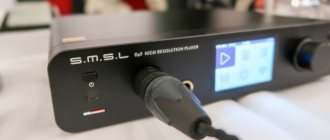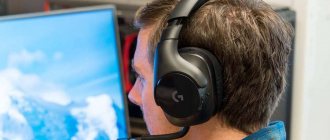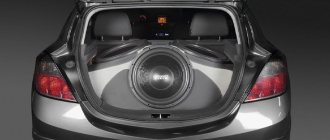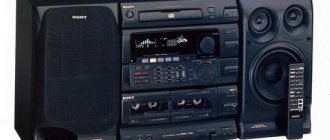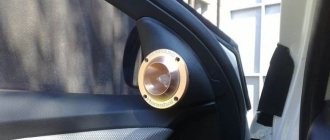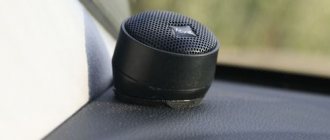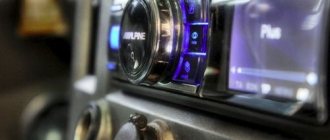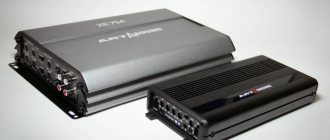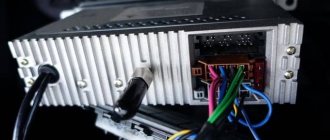Any driver may have a question, what to do if the radio in the car is poorly received? Despite the fact that this accessory does not affect driving performance or traffic safety, car enthusiasts who are accustomed to listening to pleasant music or the latest news on long trips become dissatisfied with malfunctions of the radio. Even more annoying to the driver and passengers is the changeable mood of the radio, when it periodically begins to wheeze, squeak and jump on the waves.
To fix the problem in question, first of all, you need to know how to correctly initially connect and configure the radio.
What to do if you have trouble picking up the radio in your car
and how this can be related to the vehicle, we will consider further. First you need to know the general installation rules. There is nothing complicated in this process:
- After installation, you need to connect a high-quality antenna to the radio. It can be internal, external, on adhesive tape or telescopic type. The main condition for this element is the ability to operate in the AM/FM
; - Using the buttons on the radio panel or the remote control, you should tune the waves of radio stations for reception. The band frequency in search mode changes when you press the corresponding button up or down. Alternatively, you can enter the parameters of the desired radio stations, if you know them. Modern radio tape recorders have an automatic search function, which, when activated, scans a possible space, and having found a stable signal, leaves it in the receiver’s memory;
- To select your favorite channel, you can use their numbering. Simply hold down the key with the selected number for a few seconds while turning on the desired station. In the future, after pressing this number, your favorite channel will turn on.
In principle, after these manipulations, the radio should delight the car owner with music, funny stories and information. However, there are problems with the operation of the radio that cannot be corrected with standard settings.
Causes and solutions
- 1.
Unstable reception of the radio station due to distance from the transmitting signal or the presence of additional interference (high voltage electrical poles, mobile operator towers, railways). This problem can be solved by logical actions. After leaving the area of unstable reception, the radio operation improves. Also, an active mobile phone or tablet can negatively affect the operation of the receiver if it is in close proximity to it; - 2.
Faulty antenna. Everything is clear here too. It is necessary to inspect it, remove all oxidation by stripping, and loose contacts by soldering or clamping. On the external antenna, check the plug for damage. If this does not help, you should show the element to a specialist and, if necessary, replace the antenna; - 3.
The next reason why the radio can hiss and irritate is a malfunction of the receiver itself.
Radio interference from the DVR
As a rule, it consists of a cracked circuit board. If, after opening the device, there is a defect, it should be soldered. Due to the almost jewelry-like work involved, it is better to entrust the board repair operation to a professional.
Other reasons for poor reception
. Sometimes it happens that after replacing the standard radio, the radio starts to work poorly. The reason lies in the fact that in native equipment, the connector for connecting the antenna serves as an amplifier. The new radio does not have this option. Some motorists advise installing an active antenna, powering it from the blue wire of a car music device.
Let's look at an alternative, but similar method of troubleshooting using a specific example. After replacing the standard radio with a new Pioneer device, almost all stations disappeared from the air. Everything was fine with the antenna and receiver.
Related articles:
On the advice of a specialist, you need to perform the following manipulations:
- Purchase a special adapter for a non-standard radio with suitable sockets and connectors or solder it yourself;
- When doing the work yourself, you will need a capacitor (100pF), an inductor (100 mcg);
- Two choke terminals are soldered together and a capacitor, from which the antenna will be output;
- The second terminal of the capacitor is connected to the central core of the antenna, and the remaining choke edge is soldered to the wire intended for power supply;
- All open areas are carefully isolated;
- 12 V is connected to the antenna via a choke, and to the radio via a capacitor, that’s all.
Taking into account all the nuances and possible problems in question, identifying and eliminating it is not so difficult. In order to find out what to do if you have poor radio reception in your car, you should check the antenna and receiver. When replacing the radio with another option, you will need an amplifier or an additional antenna. If none of the options presented has any effect, it is reasonable to contact an auto electrician.
Poor quality sound from the radio, humming and constant wheezing from the speakers, engine noise are a common occurrence for owners of car radios. Despite the fact that we already live in the twenty-first century and modern car radios in the distant past became digital with processor control, there are among us owners of dilapidated car radios who do not want to replace their old friend with a more modern and multifunctional radio.
Now let's look at the option of an interference filter, which in some cases can correct the situation with distorted sound. Such a filter can be made from improvised means in almost a couple of minutes. This is a simple LC filter that consists of capacitors and a choke.
Capacitors are designed for
suppression of low-frequency interference, the choke, in
turn,
smoothes out high-frequency interference.
So, to begin with
Let's make a throttle.
Winding can be done
on a ferrite ring, although it is also possible to use a ring made of powdered iron,
which can be
found in computer power supplies (yellow or white ring in color). A winding is wound around the ring, which consists of 10-15 turns of wire with a diameter of 1-1.5 mm.
Troubleshooting noise-producing problems
The first case, when listening to the radio, you will just need to tightly screw the wire coming from the antenna to ground. Second case, if the wires are damaged, look through all the audio wiring and replace the damaged section. It is best to throw the wire intact without additives. The normal option would, of course, be to lay special audio cables specifically designed for this.
Car radio wires
The third and probably the most basic point, where you don’t need to go without knowledge or without a specialist, is the fuse. First you need to determine what is wrong with the fuse. We close the negative line wire to the housing; if the background disappears, take it to the service center. Well, if you decide to do it yourself, then everything is in order:
- First you need to remove and remove the top cover of the device.
- We find the line output fuse; on Pioneer radio boards it is marked with an exclamation mark and looks like an SMD resistor with the letter “P” painted on top.
- If you don’t find the same one, then we change it in the proven old-fashioned way - we solder in several “strands” of copper wire, popularly called a “bug”. If a short circuit does occur, such a jumper will easily melt without causing harm.
- We check for functionality.
- We put everything back together in reverse order.
Pioneer fuse
It will take you about 25-30 minutes. But keep in mind that you will not receive guarantees for the work performed from anyone. If your radio burns out after such actions, only you will be to blame.
At the fourth time, crimp the tulips.
Car radio tulips
If the radio is playing when the engine is off, then you just need to thoroughly solder the linear output contact to the ground contact. And just in case, crimp all the contacts that are in the radio connections.
The car radio does not pick up well: causes and solution to the problem
Mains chargers supply an output voltage of 5-6.5...
Low pass filter for subwoofer amplifier
The LM324 is a universal type operational amplifier, available in DIP and SOIC packages. The microcircuit is widely used in household and portable equipment, contains 4 free channels with...
A very excellent charger for cars (current up to 50 Amperes)
Many times we have talked about all kinds of pulse-based chargers for car batteries, and now is no exception. And we will look at the design of the SMPS, which...
Charging for PCs (laptops and netbooks) in the car
Charging independent PCs (laptops and netbooks) in a car is quite simple. A standard charger for charging a laptop should have an output voltage of 18 Volts at a current not...
How to choose a primer for a car
Painting a vehicle has always been an important task that requires enormous hardening from the performer. We must not forget that the level of quality of a vehicle’s painting largely depends on...
How to improve radio reception in your car
...Probably everyone has noticed on the cables of monitors, printers, video cameras and other computer equipment, a ferrite cylinder in a plastic sheath.
What is it for?
A ferrite cylinder is a shield that protects against electromagnetic interference and interference: it prevents the signal transmitted through the cable from being distorted by an external electromagnetic field, and also prevents the radiation of the electromagnetic field (interference) from the cable into the external environment.
What is the principle of protection based on?
Internal and external cables of computer equipment can act as miniature antennas as they convert so-called voltage and current noise into electromagnetic radiation.
Skoda Club Belarus (Skoda car lovers club)
Unshielded cables emit noise due to common-mode noise flowing through their copper conductors, that is, high-frequency current flowing in the same direction throughout all cable conductors. This current creates a magnetic field of a certain magnitude and direction.
Ferrite is a ferromagnet that does not conduct electric current (that is, in fact, ferrite is a magnetic insulator). Eddy currents are not created in ferrites, and therefore they are very quickly remagnetized - in time with the frequency of the external electromagnetic field (the effectiveness of their protective properties is based on this).
Cable ferrite attenuates noise currents by trapping the magnetic field and dissipating some of its energy as heat. In electrical engineering terms, a ferrite element placed on a cable creates a high active impedance for common-mode currents.
Previously, costly shielding of cables with copper braid was used to attenuate noise currents.
The use of cable ferrites has reduced the cost of cable shielding and increased the efficiency of interference suppression.
At first, these ferrite filters appeared on monitor cables (naturally: after all, the quality of the “picture” is greatly influenced by all sorts of interference!), then they gradually spread to other peripherals, and now almost all cables are equipped with ferrite filter cylinders: monitors, printers, scanners, photocopiers, video cameras, digital cameras, keyboards and even cable mice.
Ferrite rings without a shell can also be found inside the system unit.
How to Increase the Noise Reduction Effectiveness of Cable Ferrite
1. Increase the length of the cable part covered by the ferrite core.
2. Increase the cross-section of the ferrite core.
3. The inner diameter of the cable ferrite should be as close as possible (ideally equal) to the outer diameter of the cable.
4. If the design features of the cable-ferrite pair allow, you can make several turns (usually one or two) of the cable around the ferrite core.
To summarize the above, the best ferrite core is the longest and thickest that can be placed on a particular cable. In this case, the internal diameter of the cable ferrite should, if possible, coincide with the external diameter of the cable.
How to use cable ferrite
Sometimes on sale you can find detachable cable ferrites in a plastic shell (heat-shrink tube) with two latches. How to use them?
The open ferrite cylinder is placed on the cable, which must be protected from electromagnetic interference and interference, approximately 3 cm from the cable tip. A loop is made around the cylinder shell. After this, the shell snaps into place. For reliability, you can equip the other end of the cable with a ferrite cylinder.
Goodbye interference, hello undistorted signal.
Wikipedia article
, dedicated
Now I understand why Wikipedia
very often criticized...
Why does the radio sound?
There are several reasons why this problem may occur. The first of them is the occurrence of interference due to contact of the amplifier body with the body or unreliable antenna shielding. In this case, when listening to a radio station with a mediocre signal level, a squealing or crackling noise will be heard when the engine is running. If you press the gas pedal, the frequency of the strong background will increase in accordance with the engine speed.
The background often appears due to the induction of high-voltage discharges created by the ignition system of a gasoline engine. Also, the level of crackling noise from car media system speakers increases due to the use of low-quality high-voltage wires and faulty spark plugs. The cause of a monotonous squeak or squeal from the speakers may be a faulty generator. Interference provokes sparking brushes, worn commutator plates, and a short circuit in the stator winding.
Also, a strong background appears due to a malfunction of the radio, for example due to the drying out of the filter capacitor in the power circuit.
In this case, the radio freezes and reacts sensitively to all sources of interference in the car, including the DVR or radar detector.
Some media systems have a line wire fuse, which is placed between the ground on the board and the side terminals of the RCA sockets. When the negative wire of an amplifier connected in this way leaves, this fuse blows so that current does not flow through the interconnections of the radio.
In this situation, the linear outputs turn out to be ungrounded, which is why the radio sounds in any operating mode.
The interference is induced on the cables connecting the amplifier to the car radio. Other problems include loose connectors or damage to the screen shell. If there is strong interference when starting the engine, then the starter is to blame. Brushes can also spark in it.
the radio hisses
Moreover, it’s also better for “+” and “-“.
Also, “drag” the radio around the cabin, see where there is more interference, and dig there.
Oh, it could be almost anything. Even a regular wire to a backlight bulb.
It’s better to take a portable device, unscrew the antenna and crawl through the entire car, looking for sources.
Xenon (and blocks and wires and lamps), a coil, explosive wires, a generator and “its wire”, even the nozzles on the injector (this is an “electromagnet”). All electric motors.
Not everything can be heard in the 27 MHz range, but everything needs to get through.
My cabin fan is making noise. By the way, Max, I finally moved the antenna to the drain near the back door. As a matter of fact, I’ll come to you to measure the SWR, if you don’t mind.
I'll raise the topic... I tried to install the ignition coils from a car in which the station works normally. It didn’t help.. I keep digging..
That is, the same station works fine on one machine, but crashes on another?
It’s better to take a portable device, unscrew the antenna and crawl through the entire car, looking for sources. Or not a laptop.
Related articles:
What is a “TV” under the hood of a car? Is this a peculiar frame or what? What is a TV? Archive of the United ForumUnited...
How to properly transport a dog in a car General rules for transporting dogs in a car If you are transporting an animal to…
Olga Alexandrina's car accident Golikov Albert Alexandrovich Articles | Society Print version “Road accident…
Home / Photos / Travel / Notes / Graphics / ASCIIAround Croatia10 days in a rented car in CroatiaTravel date: August 25, 2010 —…
Good day!
1. I purchased a device - a Mystery MDR-800HD video recorder. Why did the device attract me? I liked it and that’s it... period... Otherwise there will be arguments: this one is better, that one is worse... The article is not about choosing a registrar.
What to do
First of all, all car radio wiring is checked for damage. If the antenna plug is not seated tightly, it should be removed and cleaned of dirt and oxides. If the screen shell of the radio frequency cable is damaged or torn, the plug must be re-soldered. If the background does not disappear, then the generator is checked for wear of the brushes and commutator.
If interference occurs when the engine starts, the starter is checked. Defective parts are replaced in all cases. The spark plugs and high-voltage wires should be checked. If breakdowns and cracks are detected, parts are replaced. Line output connections are also inspected, cleaned and crimped. Power circuits are checked for connection reliability.
Another way to solve this problem is to connect the radio to another point, for example directly to the battery. To replace the line output fuse, you can contact a service center. To eliminate the background, you need to follow a simple rule: you should not lay the car radio wires in the car next to the harnesses of the ignition and engine control systems.
- Subwoofer under car seat
- Setting up the Pioneer radio
- How many amps does a radio need?
- Car radio rating

